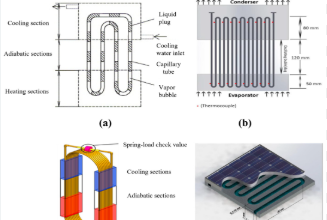What is the impact of remote work technology on the traditional workspace in the USA?

Remote work technology has profoundly influenced the traditional workspace across the United States, reshaping where, how, and when work is done. This article delves into the various impacts of this technological shift, offering a comprehensive overview of the changes observed in the traditional work environment due to the adoption of remote work practices.
Understanding Remote Work Technology
Remote work technology includes tools and platforms that enable individuals to work outside of a traditional office setting. This includes communication tools, cloud services, project management apps, and cybersecurity measures, all designed to facilitate effective work from various locations.
Evolution of the Traditional Workspace in the USA
The traditional office space in the USA has evolved significantly with the advent of remote work. Where once the physical office was a central hub for all activities, it is now becoming a flexible space used for specific purposes like meetings, collaborations, and social interactions.
Cultural Shifts in the Workplace
The cultural implications of remote work technology are vast. It has led to a more flexible work culture, where work-life balance is increasingly prioritized. This shift has also introduced challenges in maintaining company culture and employee engagement.
Technological Adoption in Organizations
To facilitate remote work, companies have ramped up their technology adoption. This includes upgrading IT infrastructure, increasing cybersecurity measures, and training employees to effectively use remote work tools.
Impact on Communication and Collaboration
Remote work technology has transformed how colleagues communicate and collaborate. While tools like Zoom and Slack enhance communication, they also require adjustments in how employees interact, often emphasizing written over verbal communication.
Changes in Employee Productivity
The impact of remote work technology on productivity has been mixed. Some studies indicate increased productivity due to reduced commuting times and fewer office distractions, while others suggest challenges in separating work from home life.
Implications for Office Real Estate
The demand for traditional office space has seen adjustments with more companies adopting hybrid or fully remote models. This change affects commercial as well as wholesale real estate dynamics, including the location, size, and design of office spaces.
Environmental Impacts
Remote work has notable environmental impacts, primarily reducing the need for daily commuting and lowering office energy consumption. This shift contributes positively to sustainability efforts.
Cybersecurity Challenges
With the increase in remote work, cybersecurity has become a critical concern. Organizations must ensure secure connections and protect sensitive information from increased risks outside the traditional office environment.
Economic Effects Across Industries
The adoption of remote work technology has varying economic impacts across different sectors. Industries that can easily adapt to remote work have seen cost savings and benefits, while others, like commercial real estate, face challenges.
Future of Work: Hybrid Models
Looking ahead, hybrid models of work are becoming more popular, combining the benefits of remote and in-office work. This model aims to optimize productivity, employee satisfaction, and resource management.
Conclusion
The impact of remote work technology on the traditional workspace in the USA is multifaceted, leading to significant changes in how businesses operate and employees work. As technology continues to evolve, so will the landscapes of traditional workplaces, steering towards more adaptive and flexible work environments.





